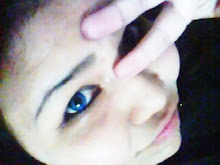Hari Raya Aidilfitri (also seen as Hari Raya Idul Fitri and Hari Raya Puasa, literally "Celebration Day of Fasting") is the Malay term for the Muslim festival of Eid ul-Fitr. Hari Raya is also known as Lebaran. Muslims in Brunei, Indonesia, Malaysia and Singapore celebrate Eid like other Muslims throughout the world. The term "Hari Raya" literally means "Day of Celebration" — it is also occasionally used to refer to Eid ul-Adha in the form of "Hari Raya Aidiladha". The main greeting used by Muslims in Malaysia and Singapore is "Selamat Hari Raya" which means "Happy Eid" in Malay. Another greeting is "maaf zahir dan batin" which translates loosely to "I seek forgiveness (from you) physically and spiritually", for Hari Raya is a time to reconcile and renew relationships with others.
Celebrating
Usually on the eve of the celebrations, family members, especially mothers and housewives, will be busy preparing food, cakes, sweets, biscuits and various delicacies to be served on the day of Hari Raya. Delicacies such as ketupat or rice cake and a meat cuisine called rendang are among the most famous cuisines that are served during this day. Other family members will help in other chores such as decorating and cleaning up the house.
Days before Hari Raya, house compounds, particularly those in the countryside will be lit up with oil lamps known as pelita or panjut. This display of oil lamps will reach its height on the 27th night of Ramadan, called the Tujuh Likur night. 'Likur' literally meaning a figure between 20 and 30, hence 'tujuh likur' means twenty seven. Originally during the early days of the arrival of Islam among the Malays, the purpose of lighting the oil lamps was to attract spirit of passed relatives and angels to descend to people's homes during the night of Lailatulqadar. However after ages has passed, such misconception is regarded counterfactual as much understanding of Islam were obtained. Nowadays the oil lamps are lit solely for decorative purposes.
It is customary for Malays to wear traditional Malay costumes. The dress for men is called baju Melayu while the women's are known as baju kurung and baju kebaya. Traditional textiles such as songket and batik are worn favourably during this day.
Muslims will attend Eid prayer in the morning and consecrate together harmoniously while taking the chance to meet and greet each other. Once the prayer is done, it is also common for Muslims in Malaysia to visit the grave of their loved ones. During this visit, they will clean the grave, perform the recital of the Yasin — a chapter (surah) from the Qur'an and also the tahlil or prayers for the deceased. All these are done in hope that their loved ones are blessed by God and they are spared from the punishment in the grave.
The rest of the day is spent visiting relatives or serving visitors. Hari Raya is a very joyous day for children for this is the day where adults are extra generous. Children will be given token sums of money, also known as duit raya from their parents and elders.
During the night, there are often celebrations with sparklers and firecrackers, albeit restrictions on playing firecrackers enforced by the authorities. Most firecracker stocks are purchased and smuggled illegally from black markets. Safety issues, especially among children are raised and alarming cases relating to injuries caused by playing firecrackers are often reported, which initially led to the banning of playing firecrackers. Despite of the enforcement of banning firecrackers, more Malay children turn to home-made firecrackers such as meriam buluh (bamboo cannon) as alternatives to commercial fireworks. Usually the lighting of firecrackers begins a few days before the end of Ramadan, and continues for about a week afterwards.
Subscribe to:
Post Comments (Atom)





No comments:
Post a Comment